IoT Asia Conference & Exhibition 2019
Opening Remarks by Minister Vivian Balakrishnan, at IoT Asia Conference And Exhibition
27 Mar 2019
I want to thank Terence and James for the introduction and I wish all of you a very good morning. I understand that this is the sixth edition of IoT Asia, and I have been here the last five times. At this rate, I think the Singapore Industrial Automation Association, should make me an honorary member.
Let me begin by surveying some broad trends, that will also set in context why we are here and why this is such an exciting area.
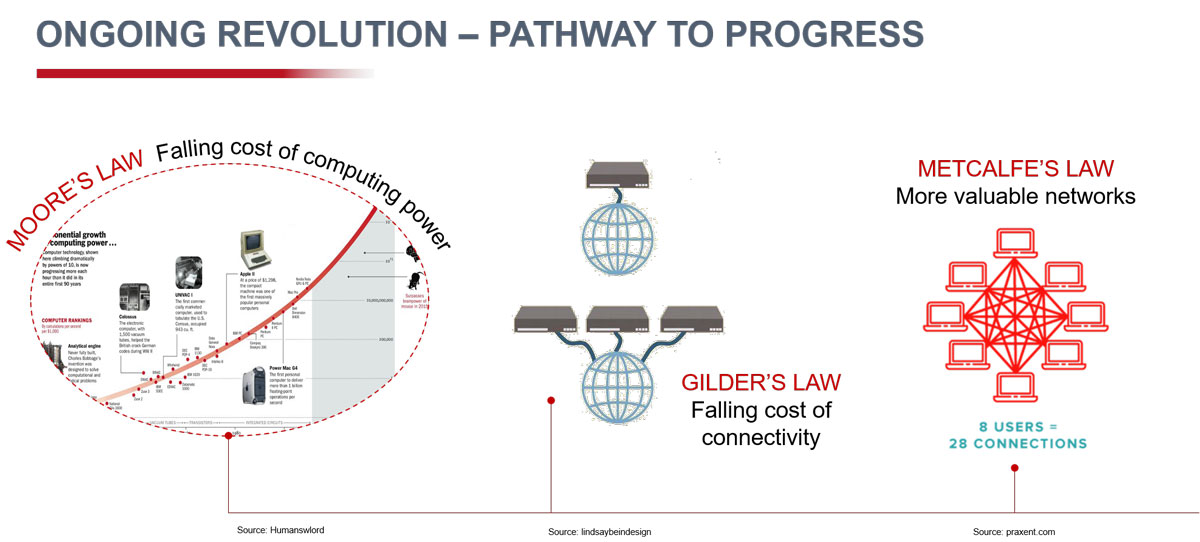
The first trend is that Moore’s law has dramatically lowered the cost of computing. In fact, the cheapest smartphone today, which would be less than a $100, has hundreds of millions times more power than the mainframe computer that was used for the Apollo lunar missions. Just think about that. And it is a fraction of the cost, and the cost is coming down.
The second trend is that the cost of connectivity, both broadband, fibre as well as mobile has also fallen dramatically. Gilder’s law, that bandwidth doubles every couple of years has been fulfilled.
The third trend is Metcalfe’s Law, that the value of that network increases by the square of the number of nodes. Which basically means, the more connections, the more nodes we have on the network, the value of the network increases exponentially by the square of the number of nodes.
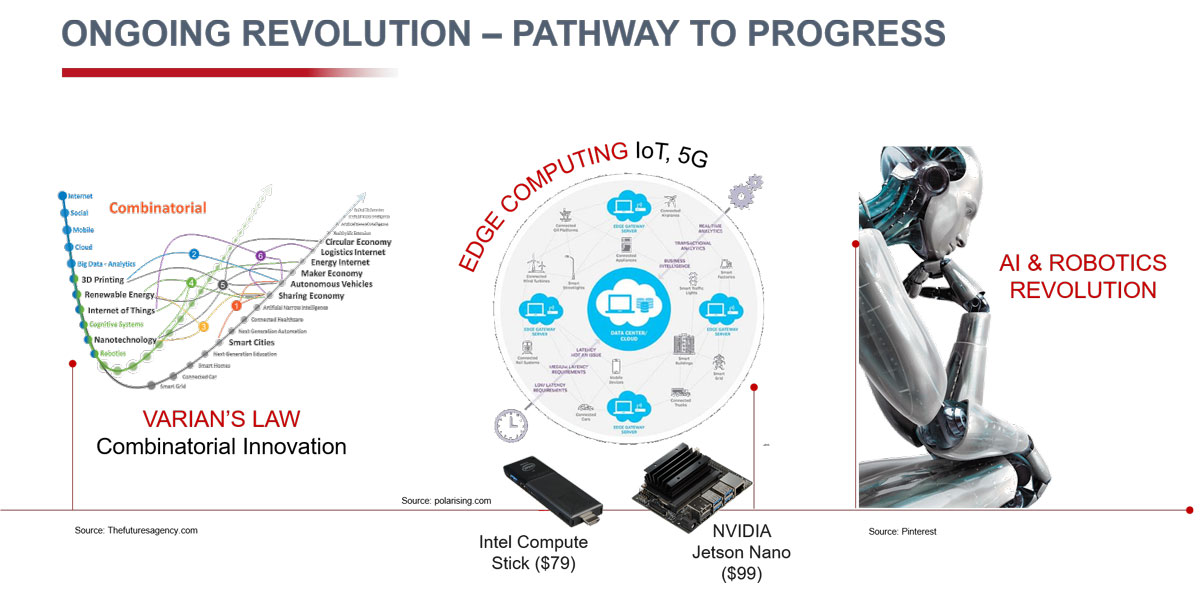
The fourth trend, Varian’s law is that precious and paid digital services are being created by an infinite permutation of essentially free open source software components. And it is the way these permutations are worked out that generates competitive advantage and value for you.
The fifth trend is that edge computing has taken off. Now, it used to be that the smart aspect of the computer network is in the server. But increasingly, we are seeing more and more computing, more and more computation and smart analysis occurring at the edge. In fact, if you think about it, IoT or even 5G networks, are really leading examples of edge computing.
The sixth trend, is that we are witnessing an explosion of Artificial Intelligence. This time in the last, I would say, five years, primarily because of new techniques from machine learning, deep learning using neural nets. Just the other day, I came across the $99 NVIDIA Jetson Nano and the $79 Intel Neural Compute Stick. What this means now, is that we are also on the verge of machine learning occurring not just in super computers or in server centres or in the cloud, but even at the edge.
The seventh trend, is the robotics revolution. Increasingly, autonomous robots that can hear, see, understand, talk, and ultimately, a fine sense of touch, finer and more precise than the most skilled surgeon’s hands. When autonomous robots can do all that, then indeed, we are in revolutionary times. And SIAA, in a sense, you are in the center of this revolution. Because all these trends that I’ve outlined earlier, are not occurring in isolation, but in fact, they are exponentially converging and feeding on one another. Hence the revolution that we are living through today.
So, the point is this, that when you think about IoT solutions, in your own business fields, we are now limited only by our own creativity, our imagination, and our own human networks. Cost is not the main limiting factor anymore.
In the midst of all these feverish activity, we must remember however, that technology cannot be the tail that wags the dog. Ultimately, value that is created in your businesses, and in our countries, are derived from how well we harness technology to improve the quality of life of human beings. Never misunderstand the centre of gravity of this enterprise.
One key challenge is how we can enable society to move in step with the frenetic pace of technological development. And for a start, we need to move even the political conversation away from just inequality and fear of job losses because we will all be replaced by robots. Of course, there will be disruption. But we need to shift the conversation to one of possibilities and progress. We need to focus on empowering human beings, real people, to give people the confidence and the verve to reskill and upskill ourselves so that we can lead productive and fulfilling lives.
Our businesses also need to be transformed. We need to become far more competitive, we need to be efficient, more innovative. And the question therefore should be – what does value creation look like? Let me try to run through a few examples for your consideration.
Today, we are using IoT to build more intelligent data centres in Singapore. For people who don’t know, data centres is one of the big secret growth stories in Singapore. The point where we almost got to start worrying about, is the proportion of electricity that is being consumed in Singapore by data centres. The Infocomm Media Development Authority of Singapore (IMDA) is working with the National Supercomputing Centre of Singapore to optimise the data centre’s energy consumption through the use of IoT, Big Data, and Machine Learning. And we have developed intelligent sensing technology to monitor the health of the data centres, monitor its energy consumption, optimise its operations, and enhance its reliability. This again, is to enhance our value proposition to this growing field of data centres.
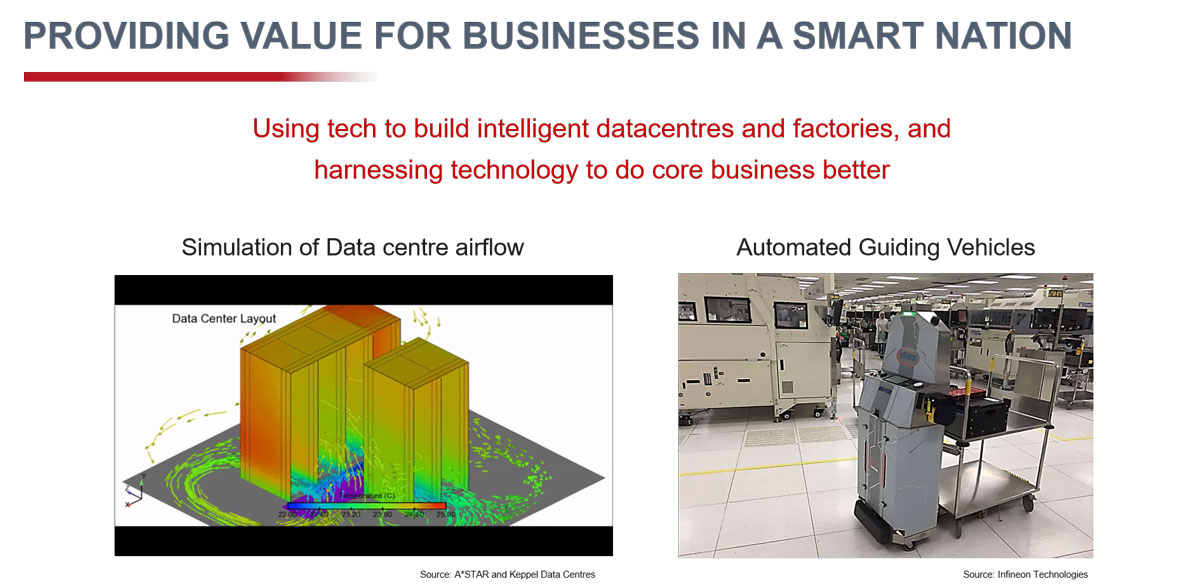
Let me give you another example. Infineon technologies, a German semiconductor firm, is investing heavily to develop a ‘smart factory’ at its Singapore manufacturing plant. With this, previously error-prone manual tasks can be automated, and workers can be channelled to higher value-added activities. Infineon also plans to use automated decision-making for scheduling and dispatching, as well as automated guided vehicles to transport chips and materials more safely and efficiently. Their expectation is that this will enable them to increase output by up to four times.
These solutions free up resources that are usually taken for administrative tasks or spent in error correction, and this way, businesses can focus on their core business strategy. In fact, you might realize that your core business may not even be about technology; but really about harnessing technology to allow you to do your core business better.
Many of these projects started from building a “wishlist” after understanding existing pain-points in your production process. From here, the project teams saw how technology could be harnessed, how a viable solution could be created, and sometimes these new solutions will challenge regulatory boundaries. And here is where I need to talk about the Government’s response.
The Government must adapt and be prepared to change policies and rules ruthlessly in order to cope with this new digital imperative. One example, one of my favourite examples, is the Monetary Authority of Singapore. You normally think of central bankers as the most conservative, kiasu, button-down people in the world. I’m very proud of our Monetary Authority of Singapore, led very ably by Mr Ravi Menon. One of the things that he has done is to build a regulatory sandbox. Basically what this means, is that when a new business comes around, offering a new financial solution, if we were to straight-jacket you with all the standard rules and regulations, you’ll never get off the ground. Our attitude now is to create a regulatory sandbox, a safe environment to trial your new, innovative technology. As long as it is below a critical size, it is not going to threaten the overall health of our fiscal system. But it allows you to try in real life. And these sandboxes therefore provide opportunities for start-ups that would otherwise not have a chance to embark on and test or to prototype new services in a high quality, highly well-regarded environment as we have in Singapore finance.
We also needed to rethink our rules and regulations in the IoT field. In fact, as more and more machines become smaller, smarter, and connected, and as services merge and overlap, our rules and regulations must keep up with this. And I would suggest that one of the roles of SIAA, would be to provide feedback to the Government on what rules you feel are wrong or obsolete, or need to be merged or need to be revised. IMDA recently concluded the consultation for a Cyber Security Guide tailored to IoT. And again, we all know painfully too well, that security and cybersecurity is a clear and present danger. We need to protect ourselves, but at the same time, we cannot be so frightened, that we dare not make progress. The way we need to do it, is to consult you, and try to build security into the design of IoT solutions from the beginning. And even then, understand in all humility that we will not get it all right in the first place. This is an iterative process where we will have to keep improving. The point I’m making is that security is a paramount concern where IoT is concerned.
Now, what about providing value for citizens? What kind of value can we create that makes a difference in the daily life of the average Singaporean? With an increasing technological overlap between the cyber and physical realm, our Smart Nation has a clear vision of how IoT can provide employable solutions to improve the quality of life on a daily basis for everyone, and to make our environment safer and more sustainable.
Last year, I shared about smart lamp posts, another of our strategic national projects – the Smart Nation Sensor Platform, which aims to accelerate the development and deployment of sensors and other IoT devices in order to provide tech solutions that would address real-world problems. Let me give you some examples.
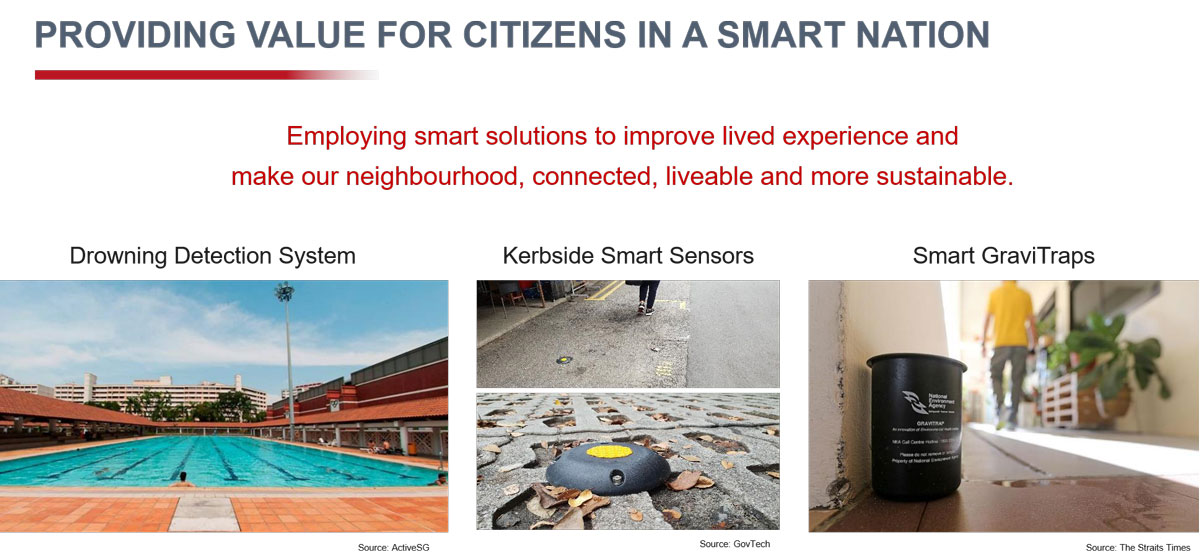
We are implementing a drowning detection system across 28 of our public community swimming pools next year. Now, having a smart system recognise people is not going to replace a lifeguard, but it gives our lifeguards extra eyes and ears, and it gives potential victims a few extra precious seconds or minutes, which makes the difference between life or death.
Let me give you another example. Last year, I spoke of the success of the Parking.sg application. In fact, Parking.sg is now used by over 60% of car owners. Now, we also plan to trial smart sensors so that people who are looking for carpark lots, will have real-time information on which lots are empty, or which carpark areas are full and not worth you even trying to look for a new parking lot. We believe that these investments, these trials, will make a difference to the daily life, but will also help us to optimise our precious limited land and infrastructure which we have available in Singapore.
Our homes also have to become safer and more secure, and we believe that the deployment of smart solutions in homes have a salient role here. In our warm and humid environment, one-degree north of the equator, dengue fever is another clear and present danger. It is transmitted by Aedes mosquitoes, and they have evolved to become urban mosquitoes, and are very well adapted to our homes. Our NEA officers, and here I speak as a former environment Minister, work very hard but it is also very difficult to eradicate Aedes mosquitoes entirely. Our National Environment Agency worked with a tech firm to develop what they call, the Smart Gravitrap. This is basically a device which has sensors that helps us sharpen the surveillance of the mosquito population, it helps destroy potential breeding sites of the Aedes mosquitoes, and in fact slowly but surely is helping to make our homes safer.
Our near-term ambition is to create smart towns, where land, infrastructure, utility, and healthcare, is optimised through the appropriate use of data. That will make our homes safer, connected, more liveable, and more sustainable.
Let me now discuss how we can create value, and in particular to emphasise on the need for co-creation and collaboration. Game-changing value, or transformation, is only created when the new solutions disrupt an old pattern, when these new solutions are adopted, and when they become part of a new equilibrium, and hopefully a better equilibrium.
But the question is, how do we get there? First, we have to be ruthlessly honest and transparent in evaluating ourselves, ensuring that we are not just jumping onto the next hype bandwagon. You know in industry exhibitions, every year when you come for this, there will be a new buzz word, a new hype. But it is very important for us to strip away the hype, and focus on what really matters.
Second, we need to collaborate, and in particular I want to say, that the Government does not have a monopoly of ideas or wisdom, and particularly in the technological field. And that’s why we need new ideas, we must make sure the Government listens, listens sincerely and as I said, certainly for rules and regulations, be prepared to bravely change them in response to industry and business feedback.
Another point is to emphasise the need for co-creation. I mentioned earlier about this new trend where valuable digital services are created out of free software components. The whole open source movement. Open source movement does not mean everything is free, but it means the components are free, and new and valuable things are created by having novel combinations of these components. This really is what co-creation is about. And therefore, we believe that we need to form deeper partnerships with the businesses and the tech community, because that’s the only way you are going to get this fertile exchange of ideas, exchange of components, and creating novel solutions that meet real-world challenges.
Our Ministry of Manpower has issued a Workplace Safety and Health Technology Challenge for our public agencies and tech companies to co-create solutions that would enhance safety and healthcare for our workers. Today, two local companies are test-bedding a fatigue detection and management device for vehicle drivers. It uses sensors and image processing technology that can detect fatigue by tracking micro-movements of a driver’s head, eyes, eyelids, and facial expressions. Sometimes I think you need to do the same thing for speakers in Parliament, and publicly. Because speakers and drivers who manifest signs of fatigue need to be reminded, need to be gently prodded, need to maintain a level of alertness for the purposes of ensuring safety. This system has led to a 93% fewer fatigue episodes detected when compared to the baseline for drivers. This is something which eventually will have to be rolled out almost universally. The point here is that these collaborative platforms allow us to learn from each other, identify gaps, identify pain points and unnecessary hurdles, and to build new products with real value.
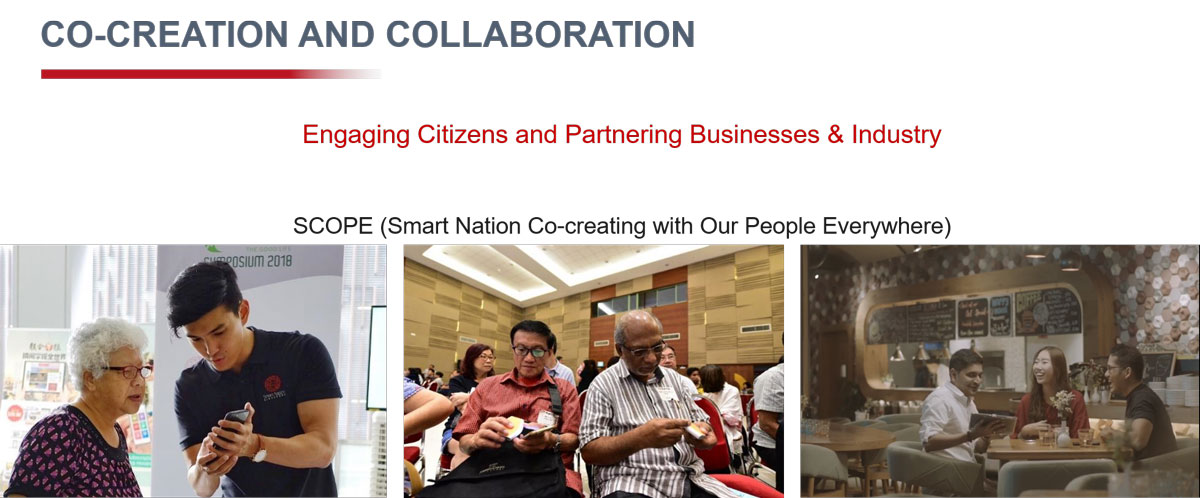
But beyond the tech and business community, we must also engage citizens to create value. We are bringing out early prototypes of our solutions to citizens through co-creation platforms like SCOPE – which stands for Smart Nation Co-Creating with our People Everywhere. In Singapore, we love acronyms. For example, we tested the Personal Alert Button, which is basically an easily deployable elderly help button system that can replace the current pull cord system for our elderly who may have been immobilised by a fall at home and they need urgently to call for help. We have also brought some prototypes to SCOPE and encouraged users – many of them seniors - to test out these systems, because in the end you can come up with what you think is a great idea, but does it work in real life, and will a senior be comfortable using this, and will it actually make a difference.
This is the kind of value creation you should strive for. Because if you think about it, our markets are saturated with lots and lots of cutting-edge new tech inventions and toys. It is easy to slip into the mode where we create because it can be done. But we all have a positive prejudice, certainly for geeks like us in this room, for everything that is “smart” or “connected”. This may not be wrong in the current competitive global climate. But history has lessons for us - while there have been many successful applications of technologies, the graveyard of technology is even bigger.
So it is not enough to simply be a geek, to love technology for its own sake, but we need to be positively oriented towards tech solutions that really create value for businesses, and make a difference in the real life of ordinary people.
So with tech developments unfolding at such a frenzied pace, it will always be hard to keep up. Anyone who misses one edition of IoT Asia, will miss a big event, and you’ll be left behind. But, I just wanted to remind you that organisations like the SIAA, and the Government, and I’m here to represent the support of the Government for SIAA’s work, we will help you walk through this long and exciting journey together. For our local firms, I hope you’d remember Minister Heng Swee Keat’s announcements during the recent Budget - Scale Up SG and SMEs Go Digital, as well as Enterprise Financing Scheme, are all here to help tide our SMEs to get through this digital revolution.
And for our foreign friends and companies, foreign SMEs, foreign trade associations, our ambitious drive to use technology to create value cannot be a purely local Singapore endeavour. The fact is that we recognise that IoT is here to stay, we recognise that this is a revolution, and we also recognise that this is a global revolution. And just as I talked about the value of co-creation and sharing at a local level, this applies also at an international level. This is why we are also building up a capability centre in GovTech, so that we can make an active push for IoT use-cases as part of Government-wide digitalisation planning. For this reason, we hope that our local SMEs and our foreign friends, will spend a bit more time, not just in the exhibitions or at meetings, but spend a bit more time examining Singapore, examining the way we do things in Singapore, and see how we can be a prototype test lab for your products and services, and we believe that Singapore can be a node in a network of global smart cities and countries. And that we can all draw inspiration and borrow ideas and expertise from the brightest minds around the globe. Therefore, I am asking you all, let’s work together, let’s create that game-changing code, that game-changing rules and regulations, and the game-changing solutions.
To conclude, in the foreseeable future, our technology has to be embedded in our daily lives. It is not the Internet of things; it is actually the Internet of daily life that we are actually trying to build. But we must also ask ourselves honestly, whether the ideas and the solutions that we are offering today, really provide real value for ordinary people in our daily lives, and whether your businesses will be stronger, more competitive, more relevant and better able to ride on this digital tsunami.
I thank you all for your presence and support. Thank you very much.
Dr Vivian Balakrishnan
Minister For Foreign Affairs,
Minister-in-Charge Of The Smart Nation Initiative

